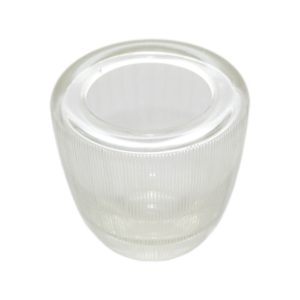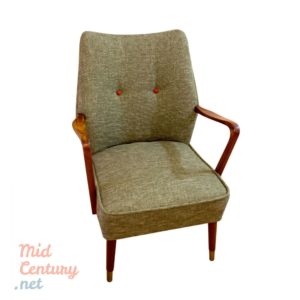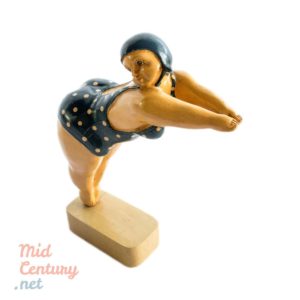- You cannot add "Green and brown bowl made in Murano, in the 1950s" to the cart because the product is out of stock.
Bayard wall clock made in France
50 €
Beautiful Bayard wall clock made in France in the 1950s. It features a laminated wood green case (Formica/Laminex) and an Art Deco dial. This clock can give a sophisticated touch to any room. This is a mechanical clock and has to be manually winded once a week to operate. It is in very good condition with only small age-related traces.
Out of stock
You may also like
-
Sold out

Art Deco mantel clock in wood case
Sold ItemsBeautiful Art Deco mantel clock made in the 1950s. It features a very elegant wood case and a precise geometric game. It is in very good condition with only small age-related traces.100 €
Additional information
| Maker | |
|---|---|
| Design Period | 1950-1959 |
| Country of Origin | |
| Identifying Marks | Brand Logo |
| Restoration, Damages | Wear consistent with age and use |
| Material(s) | |
| Color(s) | |
| Weight | 700 g |
| Dimensions (H x W x D) | 18,5 x 31,5 x 8,5 cm |
| Duties Notice | If your delivery address is not in the European Union, Iceland, Liechtenstein, Norway, or Switzerland, please be advised that import duty is not included in the prices you see online |
Product Enquiry
About Mid-Century
Clockmaking was the economic engine of the small village of Saint Nicholas D’Aliermont in Normandy for over two hundred and fifty years, beginning with the arrival of Charles-Antoine Croutte in 1725. Son of a clockmaker, Charles-Antoine succeeded so well in attracting workers to the village that 25 years later in 1750, Saint Niicholas counted 8 production shops and 27 on the eve of the French revolution in 1789.
In 1867, Albert Villon established his clockmaking shop in Saint Nicholas and began creating small ‘domestic’ alarm and mantel clocks, utilizing Japy Frères’ famous enamel dials. Villon identified his clocks by includiing his initials A.V. on the back and added his logo, the “lion passant” or walking lion which became the trademark for over eighty years.
In 1896, Albert Villon associated himself with Paul Duverdrey and Joseph Bloquel and the three of them created the company known as Albert Villon, Duverdrey et Bloquel which operated under that name until Villon’s death in 1902.
It was then rebaptized Duverdrey & Bloquel and in 1928, the brand name Bayard was retained. Bayard was chosen in reference to a character of French history known as the Chevalier de Bayard, who was without fear and without reproach.
From 1928 to about 1932, many of the clocks produced were stamped with both names – Duverdrey & Bloquel – Bayard mostly on the clock mechanism and finally only Bayard was kept along with the logo of the walking lion. Interestingly, people still confuse the Bayard lion with the car manufacturer Peugeot’s lion even though the two of them are dramatically different in design.
With the increasing mechanization of the manufacturing process, Bayard clocks were mass produced and exported to the four corners of the world during the 1930’s – a feat in itself. They also produced models for private brands such as Tribaudeau and the Manufrance catalogue. Many of the clocks produced by Duverdrey & Bloquel did not have identification marks on the case, only on the clock’s internal mechanism which makes identification sometimes a bit tricky. This is especially true for clocks that were manufactured for export.
The most easily recognizable Bayard clock is the one with the enamel dial and Roman numerals that was produced in varying sizes and case finishes.
This model ranged from the small “bijou” ladies clock in a leather carrying case, to a desk clock to the large mantle clock with a marble case weighing over 3 kgs.
The model on the left is one of Bayard’s best- known and most popular. Produced around 1937, its chrome case and stylized numbering made it into a best-seller. It was also sold in brass, porcelain and stamped Bayard & Bayard . It was a completely new model of clock for the manufacturer.











